Every spring, a patch of butterweed, a common southeastern U.S. wildflower, shows up in my lawn. They come up in the same spot every year, and I mow around them until they are done blooming. Combined with Philadelphia fleabane, which also blooms at this time, they make a pretty landscape.
Plant Description
Butterweed is in the Aster family, so the flowers resemble tiny yellow daisies and cluster at the top of the stem. The stem is hollow and has a maroon/purple hue to it. The leaves tend to be basal, with a few that reach toward the top of the plant as it grows. This annual plant blooms in early spring to late summer and prefers part-shade to full sun.
While they start short, butterweed (or yellowtop, as it is also known) can get up to 3 feet tall. Butterweed’s scientific name is Packera glabella – it used to be Senecio glabellus.
Butterweed Native Range & Soil Requirements
This native plant is found throughout the Southeast and into north central U.S. and eastern U.S. – even in Ontario, Canada. These wildflowers are found in disturbed areas – along roadsides, streams, in fields and ditches, grassy areas, and in moist floodplains. The plant prefers moist soils.
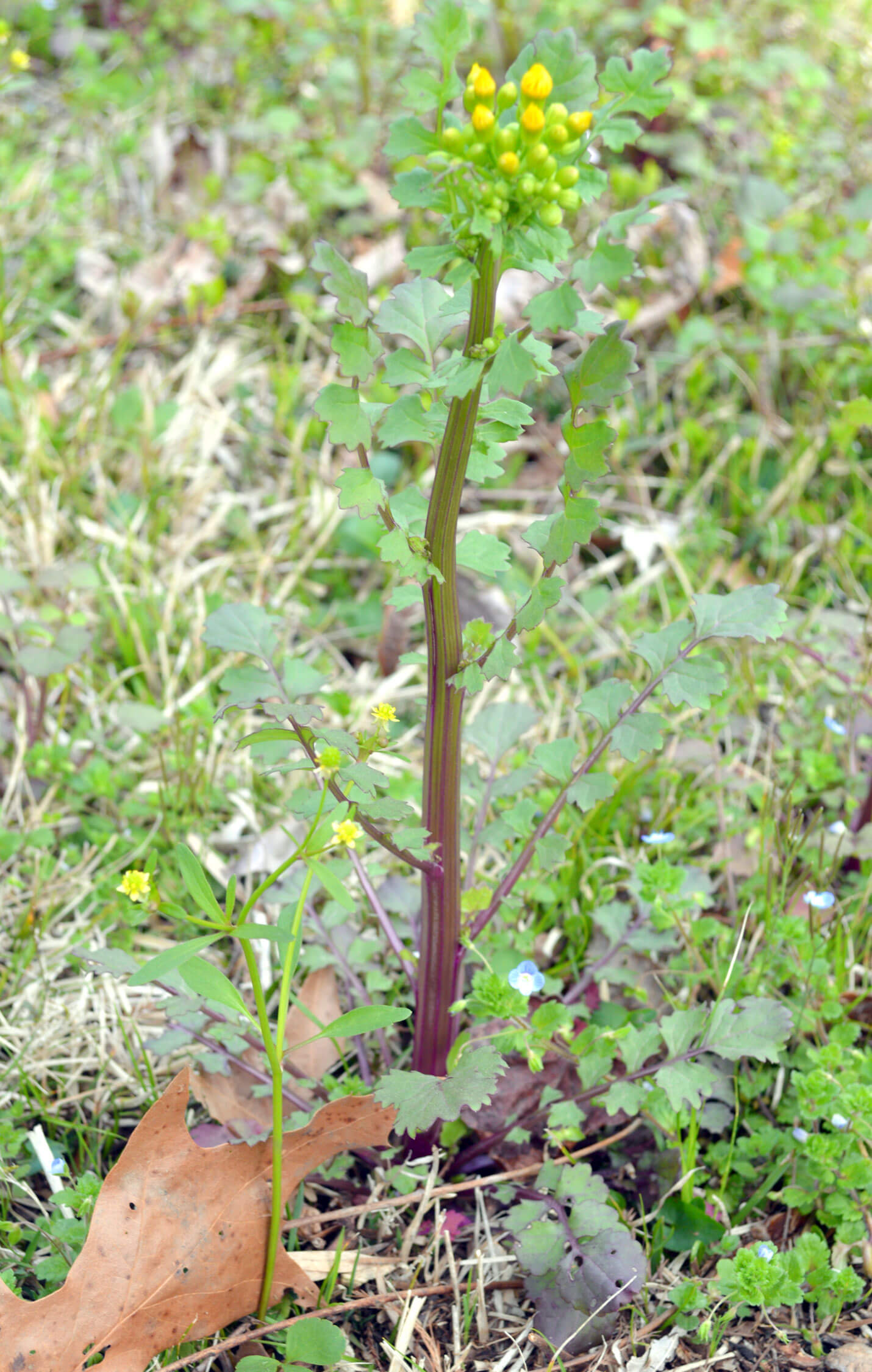
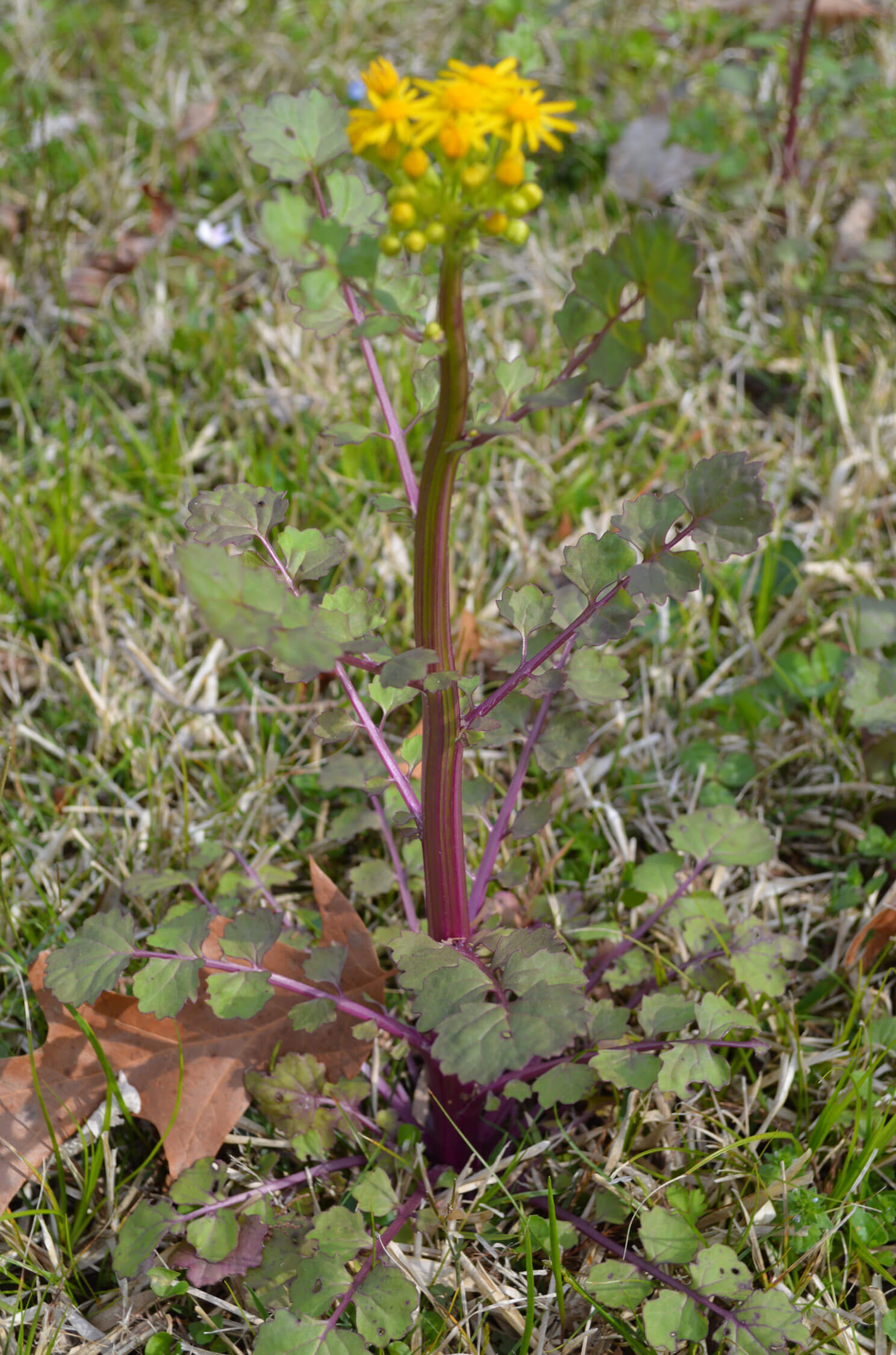
Value to Insects and Wildlife
Bees, flies, and other small insects are attracted to Butterweed and feed on its nectar. Caterpillars of several butterfly and moth species eat the leaves. You’ll find many beetles on this flower and the leaves as well.
This plant is toxic so most wildlife avoids eating it. Read more about its toxicity here: http://www.agweb.com/article/butterweed_invades_farm_fields_and_pastures/ and http://rcrec-ona.ifas.ufl.edu/pdf/publications/ona-reports/2013/or1-13.html. It is deer resistant.
Some of the insects I found in my backyard feeding on Butterweed are shown in the photos below.
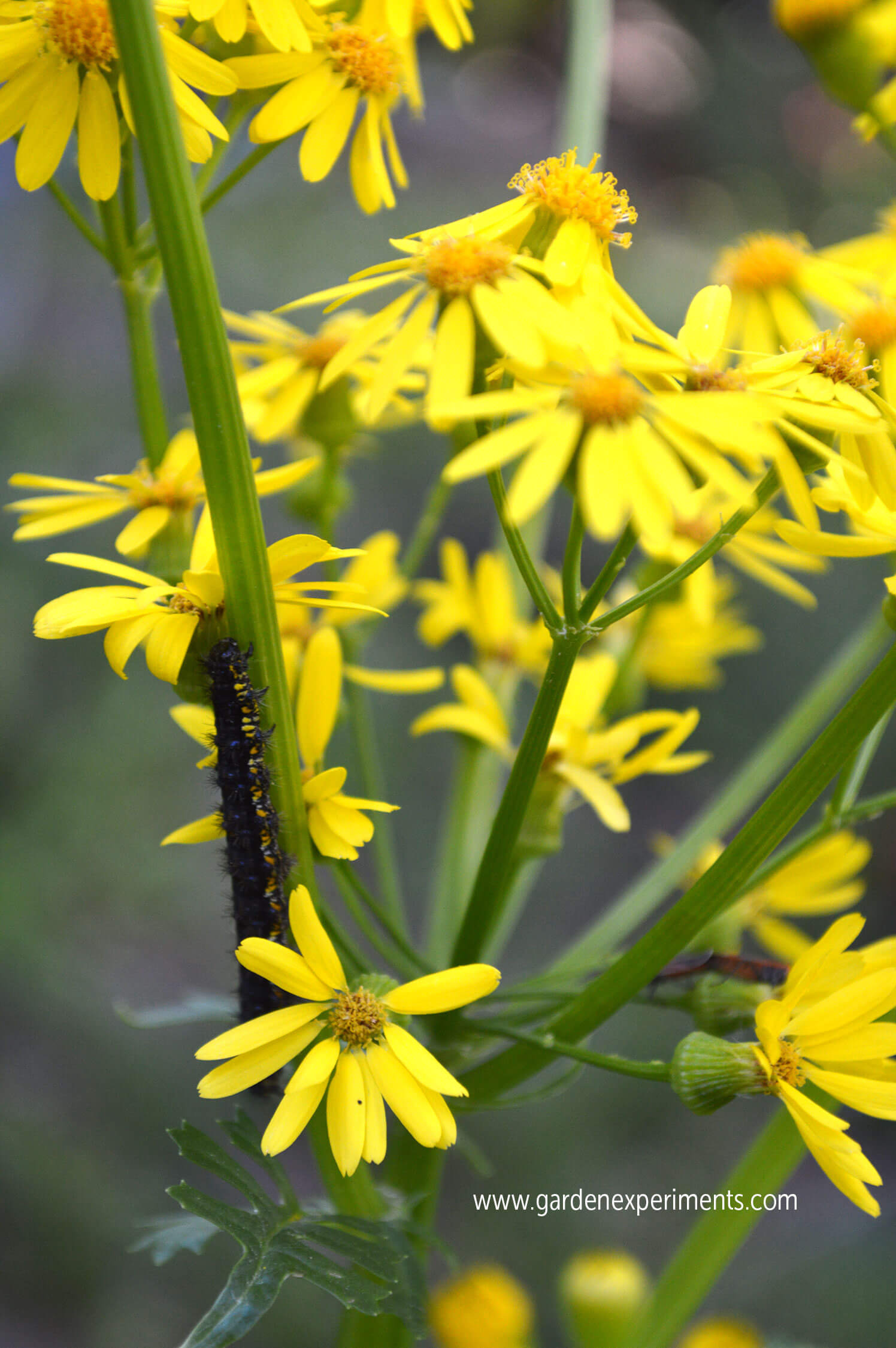

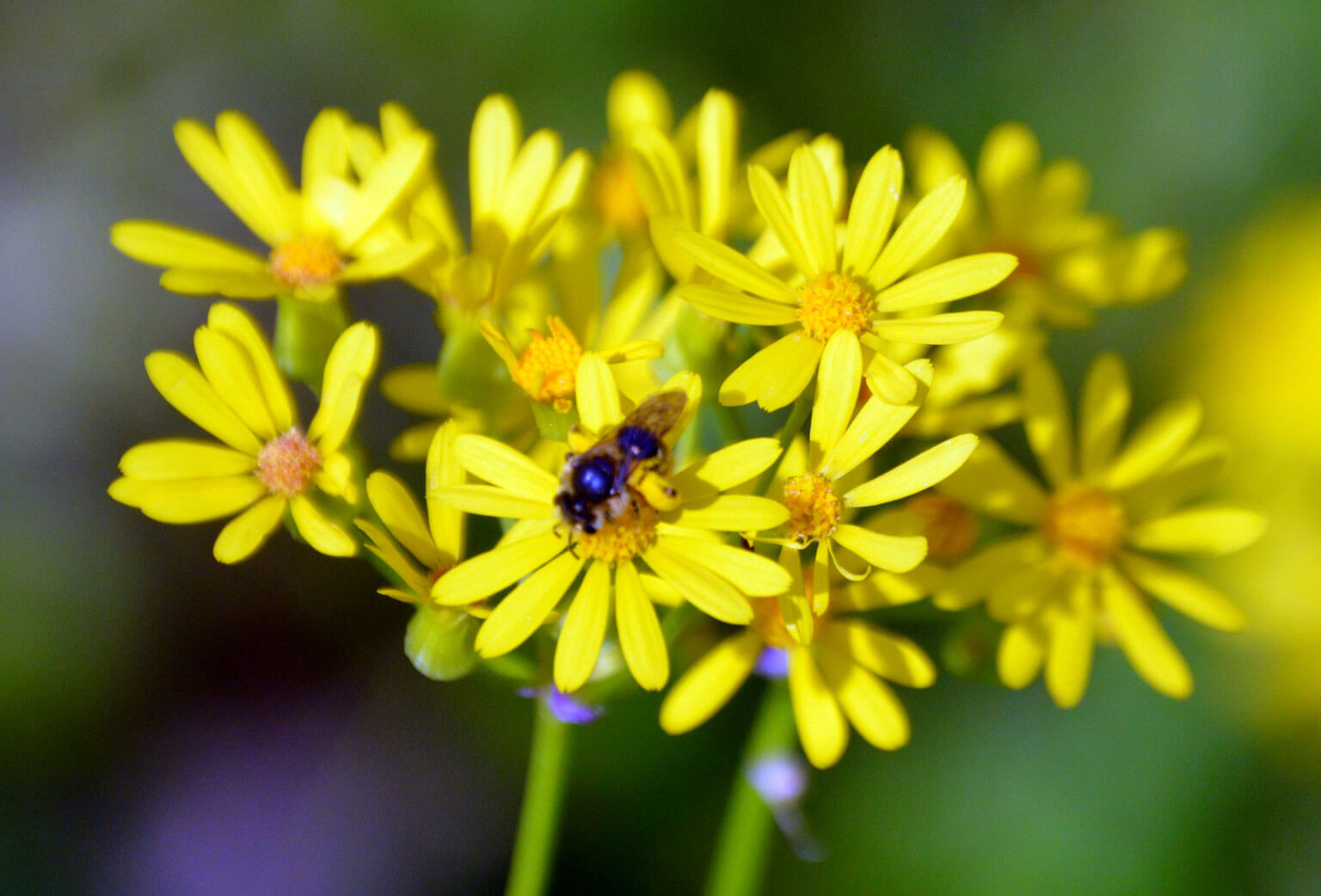
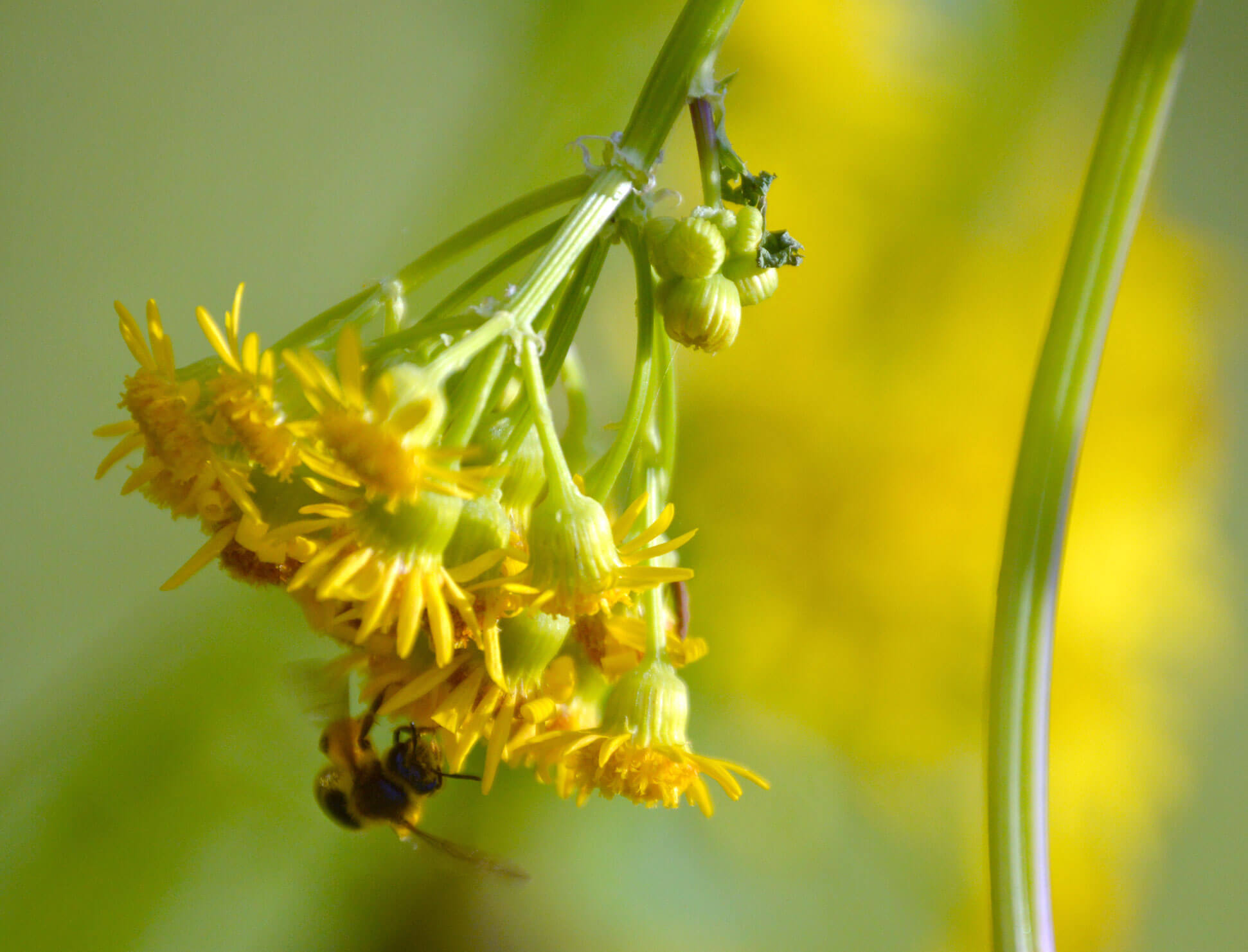
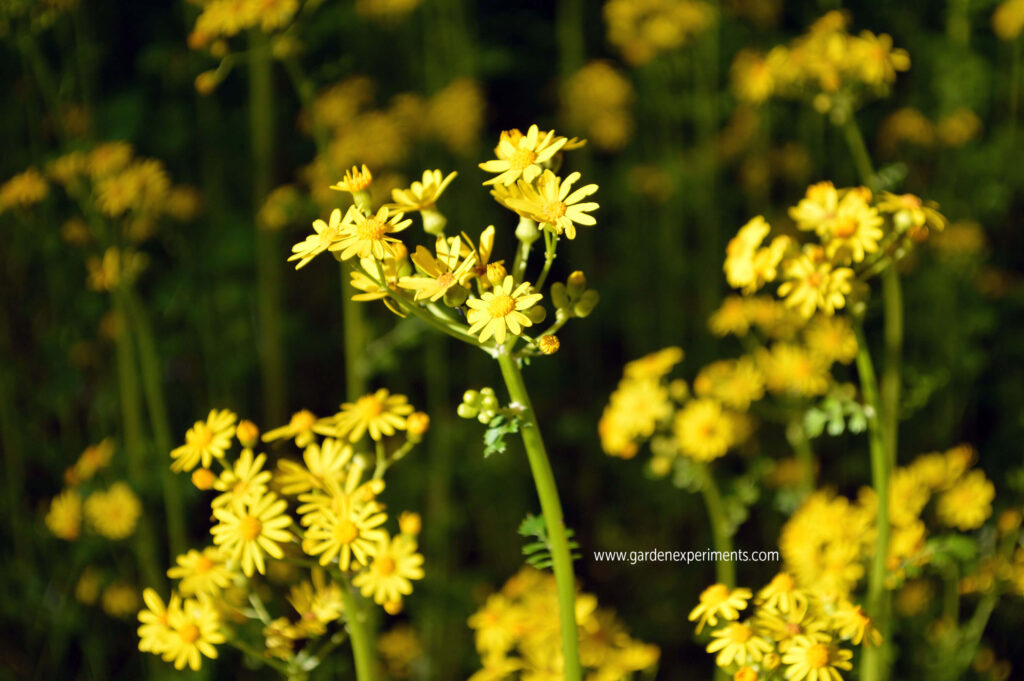
Video on Butterweed (Yellowtop)
Watch as Dr. Jeanne Jones introduces yellowtop (butterweed), a common wildflower in Mississippi

